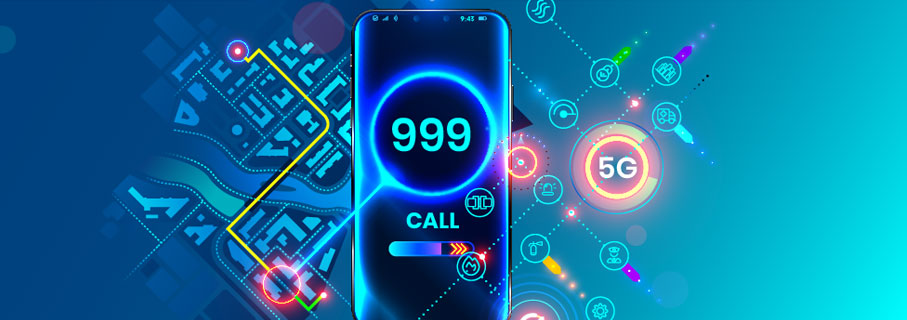Behind the 999 call – how 5G will support the emergency services
Statistics show that most 999 calls are made from mobile phones nowadays. We feel safer to have our mobile with us knowing that we can connect to the emergency services wherever and whenever we need it. Indeed, BT and the Mobile Network Operators (MNOs) play a significant role behind all 999 calls to support the life-saving work of the emergency services and the NHS.
All 999 calls are answered by BT, including those originated from other networks. The calls are free, regardless of the network connected to, and the cost is borne by the MNOs. BT work closely with all the MNOs to give the emergency control room as much information as possible when a 999 call is connected, including the location information from the handset from which the call is made, and subscriber information such as their home address. Where a smartphone is used, Advanced Mobile Location technology can be used to pin down the caller’s location to just a few metres, enabling an emergency response to be despatched quickly. To ensure the emergency services can be contacted by everyone and through all means, BT and the MNOs also support data services in addition to voice calls. A new app to allow users to call the emergency services through a British Sign Language (BSL) interpreter has just been launched so that no deaf person will be excluded when they need to make an emergency call.
While the emergency services network is currently supported by 4G, 5G is expected to enable new and innovative capabilities to be deployed by the emergency services teams to save lives. Here are some examples:
Lifesaving “smart ambulances”
Thanks to the ultra-low latency of 5G networks, ambulance crews will be able to instantly transmit life-saving details about a patient’s condition to awaiting emergency departments. 5G will also enable doctors to prescribe urgent treatment via high-definition uninterrupted video calls and augmented reality (AR) at an emergency scene or en-route to hospital.

Police helicopter as a drone
5G-enabled drones will be able to survey large areas from the sky and relay high-quality images to handheld devices carried by police officers on the ground. New surveillance capabilities such as thermal imaging for tracking suspects on the run, and live footage streaming will also be supported by 5G.
Emergency control room at the front line
Emergency control room operators will be able to see high-quality images of the emergency scene in real time via 5G-enhanced video links, including the precise locations of all responders. In addition, augmented reality (AR) can help response teams provide vital information in difficult environments, such as helping firefighters navigate smoke filled environments.
Real-time emergency control
5G-enabled technology will allow the emergency services to identify and monitor an unfolding emergency in real time. For instance, thermal cameras connected to 5G networks can alert the port authorities when people fall into the water. The thermal cameras trigger an alert when a person breaks a virtual barrier near the water, enabling the local emergency control centre to despatch a rescue mission instantly.
As communication technologies continue to advance, connectivity can be expected to play an increasingly important role in supporting the critical work of the emergency services and the NHS.
Leave a comment
Note that your details and comment will not be published.


